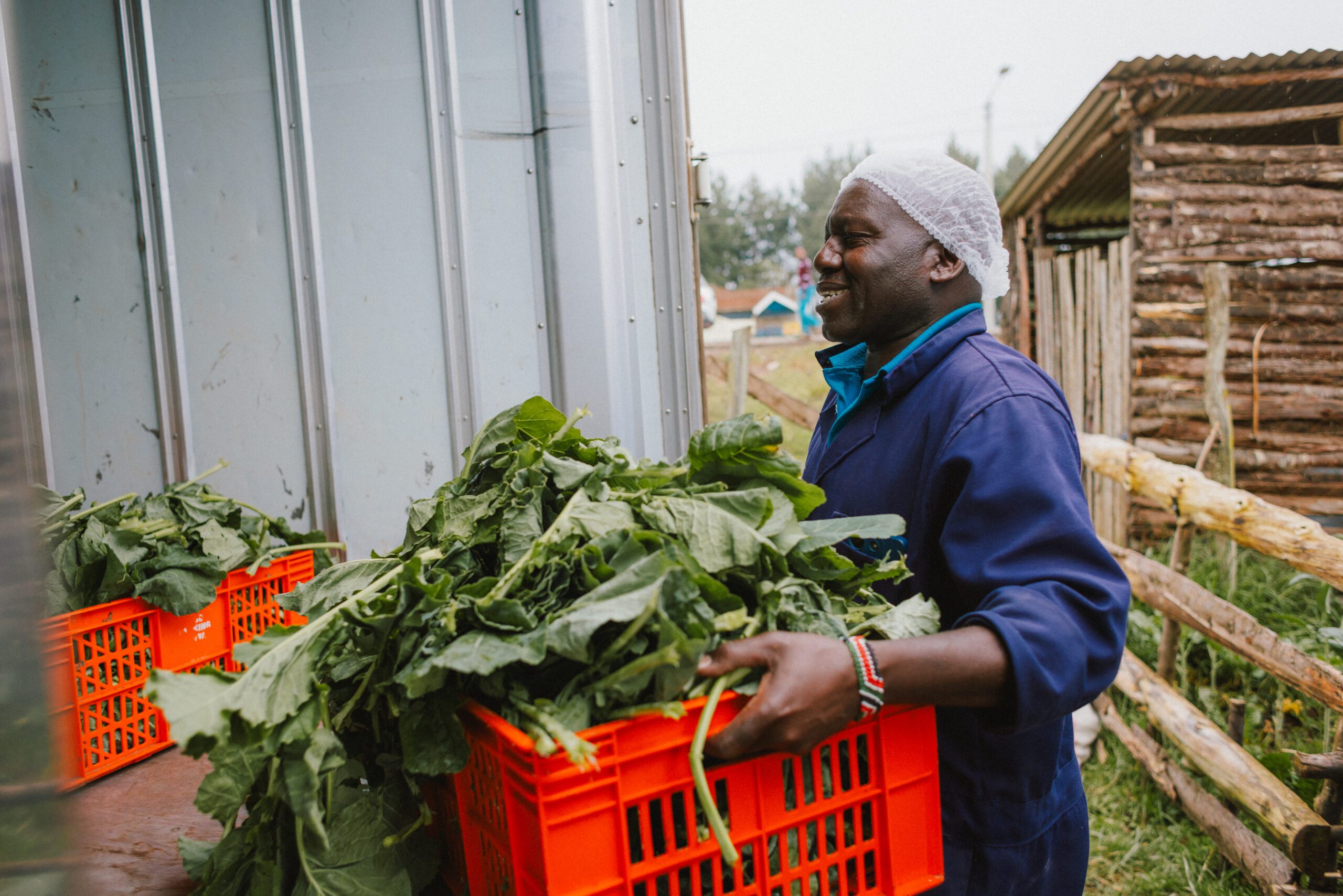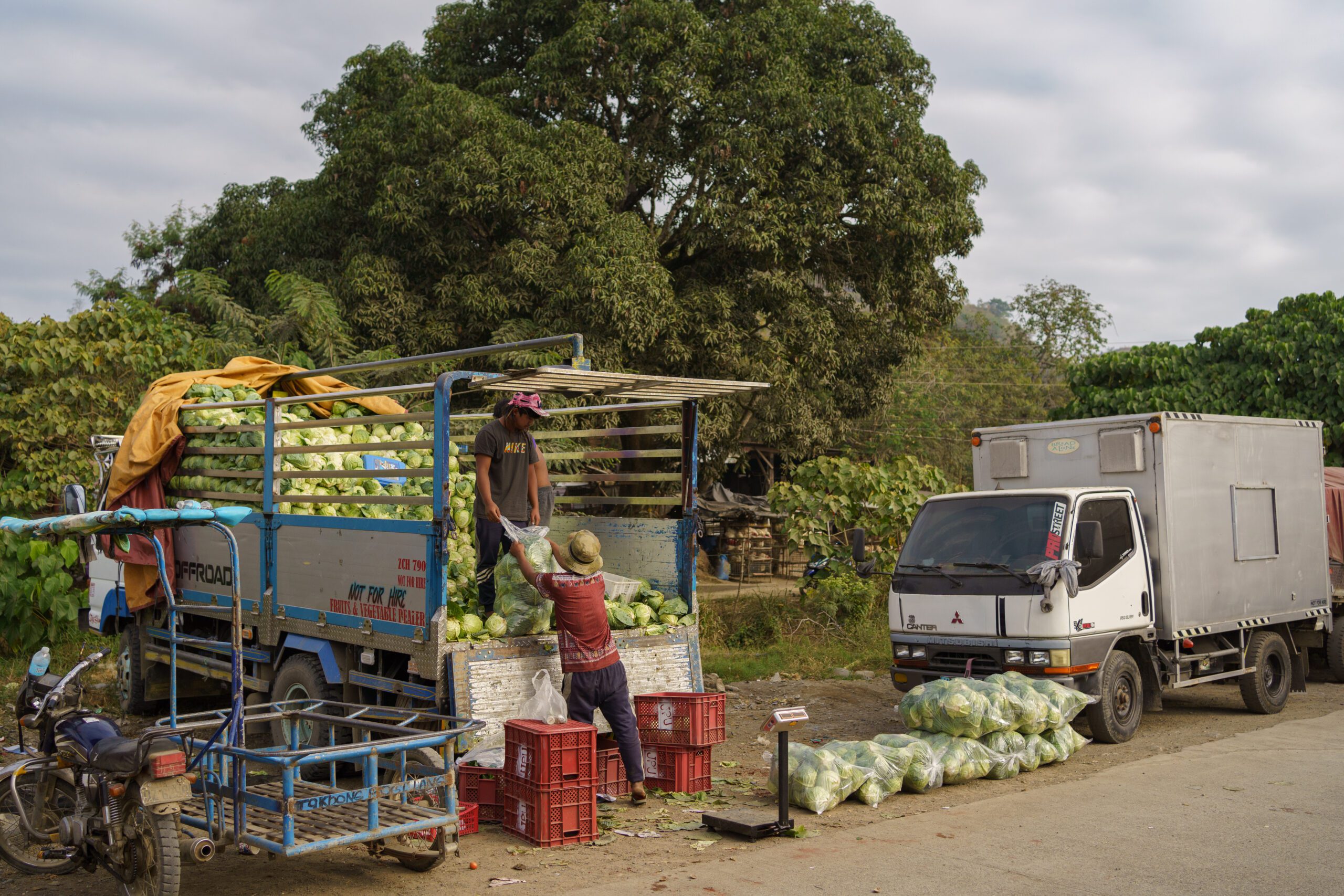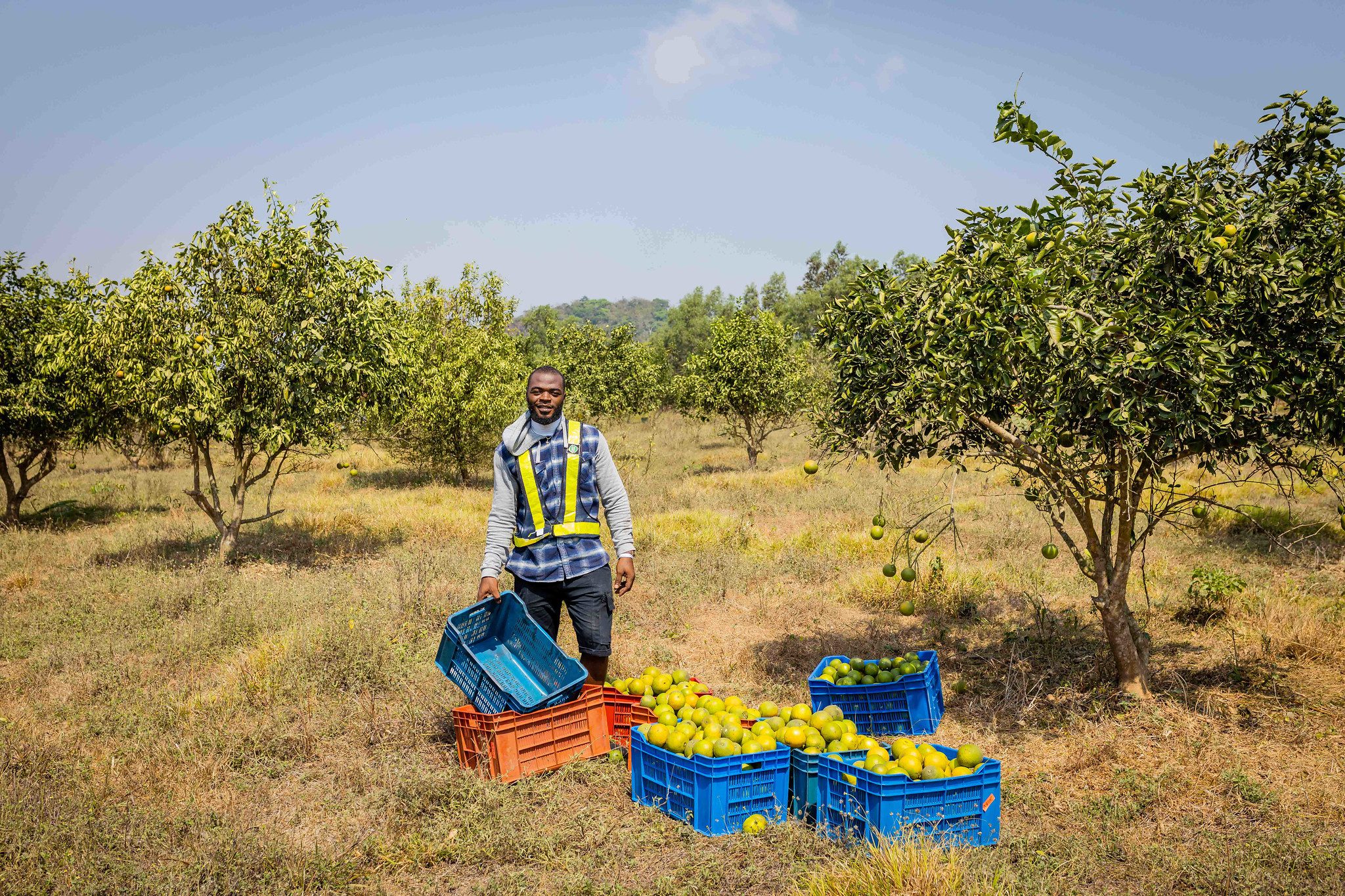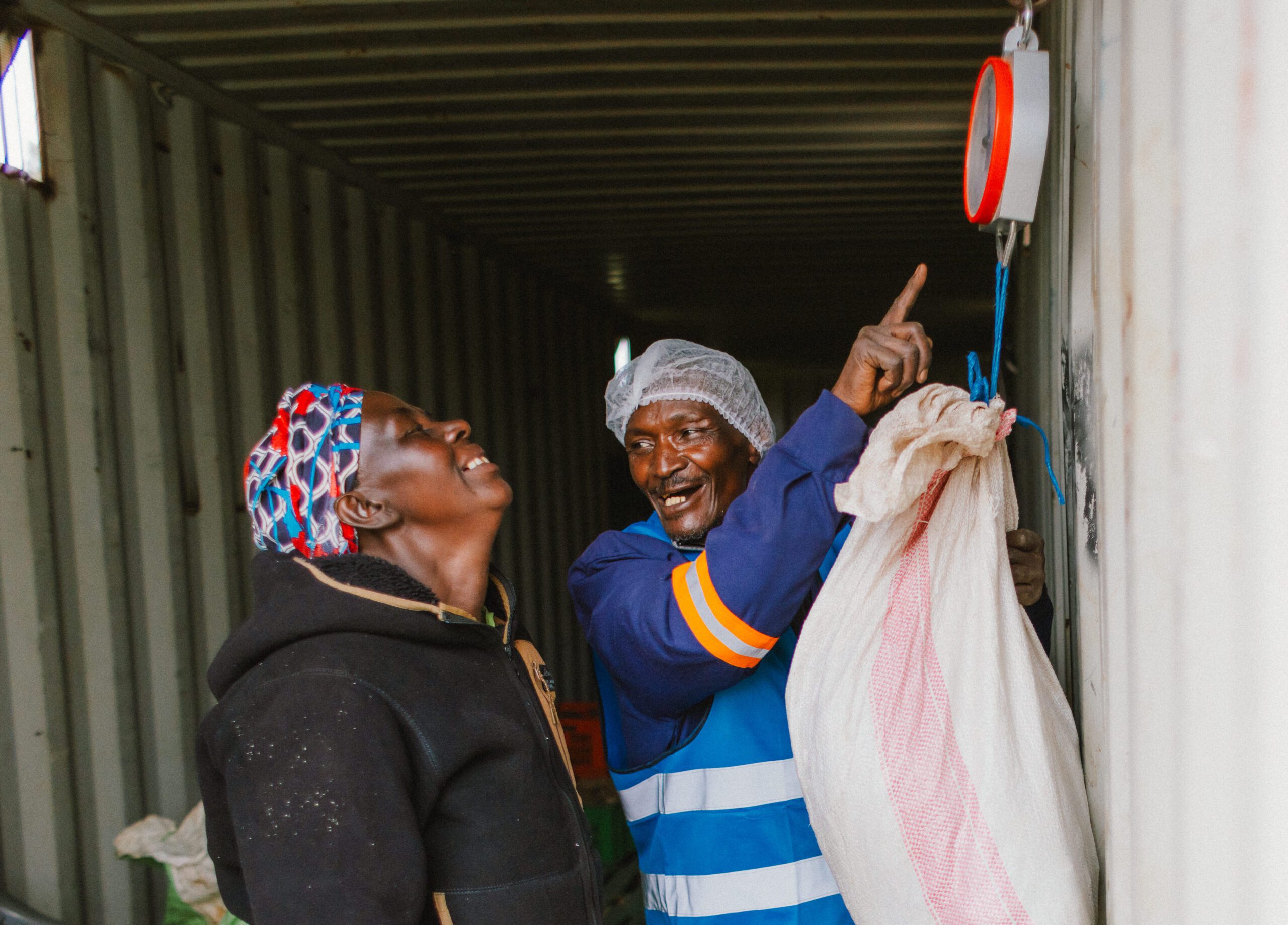Last year, The Global FoodBanking Network (GFN) established the Agricultural Recovery Hub to help member food banks recover and distribute more nutritious food while addressing food loss and waste, which contributes significantly to climate change.
The Hub is a global resource for food banks looking to launch or scale agricultural recovery efforts, located in Nairobi at the facilities of Food Banking Kenya — which runs a highly successful agricultural recovery program of its own.
The Hub focuses on providing the knowledge and technical assistance food banks need to start, scale and continually improve their efforts to recover fresh produce from farms and distribute that nutritious food to people facing hunger. Most of the participant food banks are new or in the early stages, in emerging market economies. The Hub is an integral part of GFN’s goal to work with members to distribute 1 million tons of food recovered from agricultural sources by 2030.

“We all know that food banking as a model is proven, we’ve seen it work over the years,” said Phenny Omondi, the director of the Hub. “I think agricultural recovery has become more and more important because food banks are seeking more ways to contribute to better nutritional outcomes for the communities they serve.
“When food banks are a part of our Agricultural Recovery Hub community, where they can gain knowledge and learn best practices from other regions, it accelerates their learning curve.”
Community is key for Omondi, and the word serves as the foundation for much of her work. She grew up on a small sweet potato farm in western Kenya, and that influences how she sees things. “In the rural African setup, there’s a lot of collaboration,” she said. “A lot of ubuntu, as we call it. We worked together, with shared responsibility. We knew that this community belonged to us, and each of us had a role to play.”
Omondi and the Hub bring together a community of food banks that share a sense of responsibility when it comes to providing nutritious produce to people who need it while addressing food loss and waste. One way that community comes together is through the Hub’s Community of Practice webinars. Each month, food banks convene to discuss a specific agricultural recovery topic and learn from each other’s successes and challenges.
“I think it’s a valuable space for food banks to learn from peers, sharing that lived experience,” Omondi said. “A lot of food banks have joined, so the attendance is telling.”
Serge Aka, operations and logistics manager at Banque Alimentaire de Côte d’Ivoire, regularly attends the Community of Practice sessions. Banque Alimentaire is a newer food bank, and Aka says that he’s learned much from interacting with food banks from all over the world.
“For example, the Argentine Food Bank emphasized the importance of having a clear methodology for recovery and distribution in place even before starting work on the ground,” Aka said. “This advice taught us a lot about the need to structure operations properly before diving in. Additionally, [Rise Against Hunger Philippines] shared an interesting strategy of barter, where they give dry products in exchange for fruits and vegetables.

“These exchanges have enriched our vision and helped us better structure our upcoming projects, particularly regarding agricultural recovery and distribution.”
Nahuel Zalazar, who focuses on reducing agricultural loss and waste for the NODO food bank in Argentina, said the Community of Practice has been an excellent initiative for him. “It is very motivating to know that there are so many similarities in problems and opportunities in global agrifood system to work on reducing waste.”
Omondi believes that it’s best for everyone involved to have a mix of newer and more well-established food banks in the Community of Practice. A new food bank can certainly learn a lot from food banks who have long-running agricultural recovery programs. But the lessons go both ways.
“Food banks that are just starting often grapple with challenges like infrastructure and logistics and even financial constraints, so they’re more innovative sometimes in the way that they work,” Omondi said. “And I think those [lessons] can definitely apply to food banks that are more established.”
In the future, Omondi and her colleagues plan on offering opportunities for food bankers to continue to wrestle with their challenges collaboratively, but in person, through a fellowship exchange program. The program would allow food bank staff to see other agricultural recovery programs in action.
In addition to building a strong Community of Practice, the Hub provides a suite of agricultural recovery resources as well as technical assistance tailored to the needs and challenges of each food bank.
Soon, the Hub will publish a toolkit that covers topics like how to do a feasibility assessment for a potential agricultural recovery program or the difference between working with small-scale or commercial farmers.
After learning about a food bank’s specific needs and challenges, Omondi and her colleagues at GFN also offer specific support in areas like logistics, infrastructure and distribution. And they connect food banks to experts outside of GFN when appropriate as well.
Another benefit of the Hub is that Omondi helps identify and implement innovative methods of agricultural recovery that food banks might want to pilot then, if successful, scale.
“One of the innovations I see is virtual food banking in agricultural recovery,” said Omondi. “The way Food Banking Kenya is using [it] is certainly interesting and could be scaled to other parts of the world. Agricultural recovery programs often grapple with this issue of perishability, and there are often long distances between farms and food banks.
“Another program that is really exciting is the barter system that Rise Against Hunger is using,” she said. “I think it’s brilliant, there’s just a really well-defined system.”
One way the Hub will be sharing these innovative programs with food banks is through a series of case studies that serve as a starting point for food banks looking to adopt innovative solutions for their programs.
Although GFN’s Agricultural Recovery Hub just launched this year, it is already providing food banks with the tools they need to reach their goals. Omondi has been encouraged by how invested food banks have been in the work.
“Food banks have been really wonderful in sharing their journeys and their programs and models,” Omondi said. “They see an opportunity to reduce food loss and waste at the farm level and in markets and also contribute to providing more nutritious food to communities. Just seeing the level of interest to scale agricultural recovery programs, to recover more, cements the idea of why we created the Agricultural Recovery Hub.
“One of the themes that has come up a lot is the role of agricultural recovery beyond just providing food. The goal is to recover and redistribute 1 million tons [to people facing hunger], but beyond that, there’s a lot of social and economic impact on farmers. That has been really grounding and reassuring of the whole essence of the Hub.”


